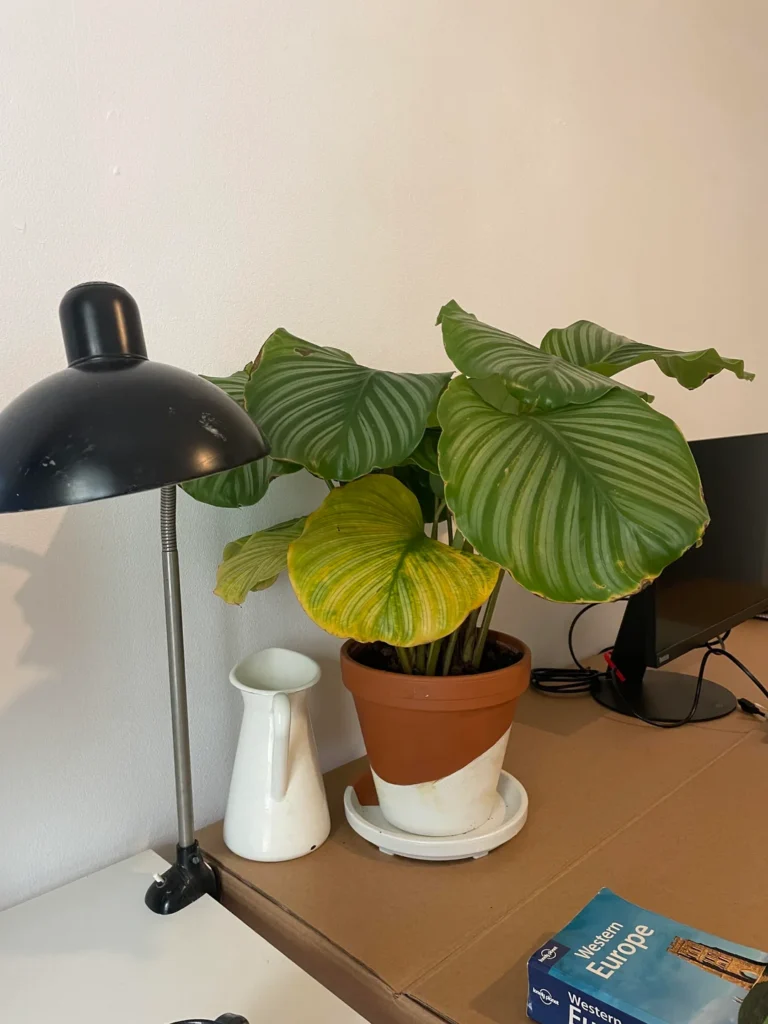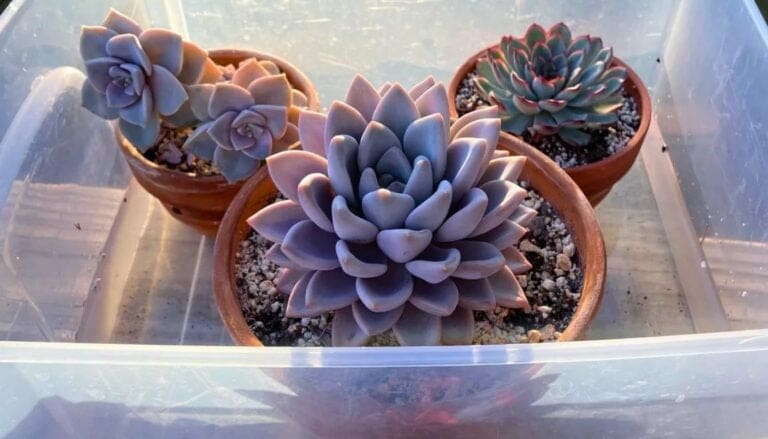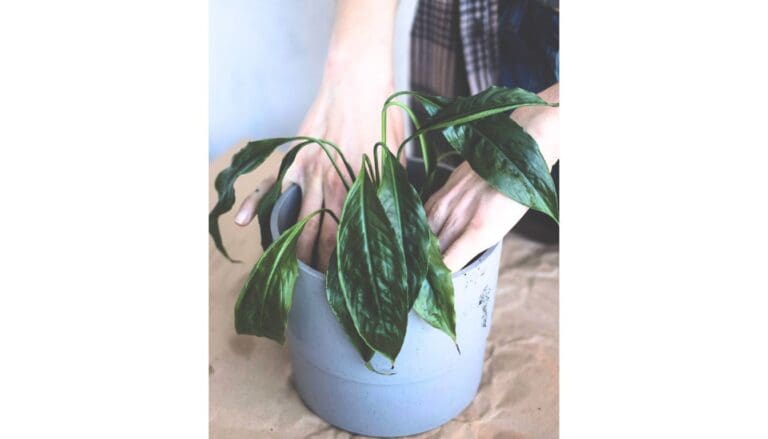Will Vinegar Hurt Indoor Plants? (Bad Effects+When To Use)
We often try different things for our indoor plants to understand which one works best for them. One of these is vinegar. Vinegar is mainly used to get rid of pests and insects or keep pets away from the houseplants. But you should know that all plants might not endure vinegar.
So today, let’s discuss will vinegar hurt indoor plants? And what you should do with it.
Vinegar is considered unsafe for indoor plants because it contains 5% acetic acid that destroys the cell membrane and dries out the plant’s leaves. Also, if vinegar is poured into the soil, it can wilt your plants. However, a small amount of vinegar is tolerable if the plant is matured and stable.
If vinegar is sprayed in the leaves, it will turn yellow and become dry. But the roots will remain unaffected. Only the portions which got the touch of vinegar will get affected.
Even after so much risk, many people still use vinegar on indoor plants. But this article can help you understand how harmful or effective vinegar is for your indoor plants. Will it keep them safe, or will it kill them? Let’s read.

Please note: Simplify Plants is reader-supported. Some links in the post are affiliate links and I get a commission from purchases made through links in the post.
How does vinegar kill houseplants?
Vinegar has 5% of acetic acid, which can be harmful to indoor plants. When you pour or spray vinegar on the plants, it starts eating the outside layers of the leaves. It damages the waxy cuticle and exposes the cells beneath.
The cuticle is responsible for preventing water loss from the cells. When the cuticle gets damaged, the plants will start drying out due to the loss of moisture.
Thus, in this way, vinegar damages the leaves by drying them out. However, if sprayed on the leaves, only the leaves will get affected. The plant will not die. You can get rid of these leaves.
But if vinegar has entered into the soil and reached the root system, it will make the roots dry and destroy them. In such conditions, you won’t be able to save your plant at any cost.
If the amount of vinegar used is low, it might not reach the roots. If you have used an excess of vinegar, it will reduce the soil’s pH level. So, if your plant is dead because of high vinegar, it is better to discard that soil.
Reusing this soil for other plants or seeds can harm them. High vinegar burns the soil, and using that soil will thus dry out the plant or the seeds you are planning to plant or sow.
Why should you not use vinegar on indoor plants?
As vinegar is a form of acidic medium, it will dry your plant entirely and kill them at the end. However, the plants that enjoy acidic soil would handle the vinegar in the soil to some extent, but other plants will not do so.
If you want to use vinegar for your indoor plant, research the plant’s tolerance towards vinegar and then use it.
If you want to solve any problem using vinegar and your plant is sensitive to vinegar, try other methods to solve problems and cure your plants.
Effects of vinegar in some houseplants
Let us read about some species of houseplants and their damage caused by vinegar.
Acid-loving plants
You can use vinegar for these types of plants. They will love vinegar, remain happy, and be comfortable if vinegar is sprayed on the leaves or poured into the soil.
Whenever the pH level drops, try using vinegar. These plants will not just survive but also thrive. Some examples of acid-loving plants are:
- Camellias
- Azaleas
- Japanese anemones
- Gardenias
- Some succulents
Indoor trees
The damage rate of these plants is 1/5. They can survive some drops of vinegar.
For example, if Dracaena grows about 3 feet tall, it will handle some household vinegar. However, the damaging rate depends on the quantity you have used.
If you have sprayed some on the leaves and the plant is tall and strong enough, it would have strong leaves. Another example would be the Snake plant. They have pretty strong and thick leaves. So, a slight touch of vinegar won’t be able to harm them much.
Succulents
These kinds of plants will get affected by the use of vinegar. However, small amounts will not harm them. They will only have scars on the leaves. Their damage rate is 2/5.
If you use more vinegar on them, it will result in fungal infection. Slowly the plant will die within 3 weeks to 2 months.
The amount of damage depends on the types of succulents you own. Plants like Huernia or Echinocereus will be the most affected, whereas Aloe vera and Haworthia will have some marks of scars on their leaves and bodies.
Herbaceous plants
Mostly all the herbaceous plants are considered annual plants. But there are exceptions, like the perennial ones.
For example, Salvia Divinorum will remain strong, beautiful, and healthy and grow indoors for many years. But they cannot live in frost.
If you accidentally spray vinegar over them, the leaves will get burned. You will have to remove those burned leaves from the plants. The plant will then start recovering.
If you are growing plants with seeds, avoid using vinegar in the seedlings as it will harm them significantly. Herbaceous plants can be vulnerable and sensitive to vinegar. Their damage rate by vinegar is 4.5/5.
Young plants

Young plants will get highly affected if sprayed with vinegar. They are too young and tender. Spraying them with such an acidic medium will harm their growth.
However, if you have mistakenly sprayed some on them, it can be treated. If you want your young plants to recover from vinegar, you will have to start the treatment before the vinegar starts drying up.
You should not give the vinegar much time to get into the leaves. Acting fast will only allow the vinegar to weaken the cell and membrane of the leaves.
You can immediately rinse the leaves with water whenever you have sprayed vinegar on the young plants by mistake. It will help them recover quickly.
If the vinegar has already dried up, there is no use in rinsing or cleaning off the vinegar. It has already got into the leaves. And soon, the plants might die. The danger level for young plants is 5/5.
If you have used diluted the vinegar before using it on your indoor plants, the damage level might be a little lower, but not much. In such conditions, you can try flushing your young plants with a good amount of water. This can help stop the vinegar from penetrating much into the plant.
Your plant may recover. Give them water in low amounts but more often than usual and give them all their requirements adequately in time. Make sure not to overwater.
Old plants
As for matured plants, old and strong, they will handle vinegar to some extent and won’t die, provided the amount used is not too much.
Whenever you spray vinegar on them, rinse them very well with water. If the plant is big, pour a bucket of lukewarm water into the plant immediately.
If your plants are wood stem plants, you might not have to worry much. Even if the vinegar harms the plant to some extent, it will soon recover.
If the plant is annual, the harm will be pretty intense. However, you can save them provided you do it quickly. Do not allow the vinegar to dry.
Before the vinegar starts drying, rinse it with water. The faster you act, the more likelihood you have to save your plant.
However, if you have used diluted vinegar on your old houseplants, it won’t harm them much. They will quickly come back to life. Just give them some time, along with the correct requirements.
What to do if the indoor plants are affected by vinegar?

I have already discussed before, in short, how you can get rid of vinegar to save your plants. Here I will discuss in detail how to remove vinegar both from the leaves and soil.
Whenever you have got vinegar in your indoor plants, you should immediately take steps to get them off from your plant. You should do this before the vinegar dries. If you don’t allow the vinegar to dry, it won’t reach into the plant cells or membrane.
- To get it off from the leaves, you will have to wipe it off. Take a cloth and wet it with water. Now wipe your plant leaves and stems and wherever you have dropped the vinegar. Do not use a dry cloth as that will only spread the vinegar to other plant parts. A damp cloth will dilute the vinegar with water and lessen its strength.
- If you have poured vinegar into the soil that risks reaching the roots, you will probably need to repot your plant. Adding vinegar to the soil can alter the soil’s pH level, which will be unsuitable for the plant. Moreover, vinegar will dry the roots and kill the plant. The quicker you act, the less vinegar can harm your plant.
After you are done repotting, do not forget to water your plant. This will reduce stress and help the plant get rid of vinegar completely. Your plant will start responding well within a few days.
Even though vinegar is harmful to indoor plants, there are other circumstances where you might have to use vinegar. But you should always keep your plants away from the use of vinegar, except for the acid-loving plants.
When to use vinegar on indoor plants?

Even if it is recommended that you avoid using vinegar, there are some situations where vinegar can help. There are 4-5 reasons why vinegar is used in indoor plants. They are:
To get rid of pests and insects
To keep bugs away from your indoor plants, soak a towel in vinegar and keep it wrapped surrounding the pot base. The pests won’t enjoy the smell of vinegar and will go away.
If you want some powerful solution, you can soak some cotton balls in vinegar, drain them, and randomly keep them over the soil.
To repel pests
To keep the pets away from your houseplants, you can try the towel method used while repelling pests and insects.
You can also keep your plant over a saucer and keep some cotton balls soaked in vinegar over the saucer surrounding the pot. The smell of vinegar will keep your pets away from your houseplant.
To keep acid-lovers happy
Some plants love acidic soil that can survive both indoors and outdoors. Plants like camellia and gardenia will love growing in acidic soil.
When vinegar is sprayed on the leaves or poured into the soil, they will thrive and grow happily. However, the vinegar will work as an acid boost and will quickly lose its effect.
To make an ideal vinegar solution for acid-loving plants, mix 1 cup of vinegar with 1 gallon of water and water your plants.
To kill weeds
As vinegar can kill plants, it will be helpful to kill weeds. Weeds not only grow in the garden, but they can also grow in potted plants. Maybe the seeds were already present in the compost or the soil you used for your indoor plants during planting time. Or you did not sterilize your pot before using it.
To kill the weeds, spray some vinegar but be careful not to spray it on the plant. If you have done it by mistake, remove it before it starts drying.
If you are unsure about using vinegar that might harm your plant, you can use commercial weed killers.
Final words
Vinegar is not entirely harmful to indoor plants; it is useful too, like removing pests and keeping pet animals away from plants. But still, you should be careful while using vinegar on indoor plants. Do not use too much and end up killing your plant.
If you have used some of it on the plants or the soil, no need to panic. Just be quick and remove it with a wet cloth. There is nothing to worry about if it gets spilled in the soil as it won’t reach the roots.
Vinegar has both advantages and disadvantages. However, the latter is more than the former. Still, at some point in time, vinegar can be helpful for your plants. Using it carefully is all that you have to do.
FAQ
Can you clean your indoor plant leaves by using vinegar?
Most people say that there is nothing wrong with cleaning the leaves with vinegar. But I would instead recommend you to use normal plain water to clean or rinse the leaves.
Cleaning leaves with vinegar is possible for acid-loving plants, but it won’t work for plants that prefer neutral or alkaline soil. So using water is more considerable than vinegar.
Ref: Common insect pests and diseases, The Pennsylvania State University, Mississippi State University, Clemson University Cooperative Extension, Agriculture and Natural Resources, University of California, University of Minnesota.
Recommended Garden Supplies
| Product Image | Our Recommended Gardening Supplies | Check Offers! |
|---|---|---|
Top Top
Top
Top
Top
Top
Top
Top
Top | rePotme Houseplant and Tropical Classic Potting Soil Mix | Check Offer On Amazon |
 Top
Top
Top
Top
Top
Top
Top
Top | Espoma Organic Indoor Plant Food | Check Offer On Amazon |
 Top
Top
Top
Top
Top
Top
Top
Top | GooingTop LED Grow Light 6000K Full Spectrum Clip Plant Growing Lamp | Check Offer On Amazon |
 Top
Top
Top
Top
Top
Top
Top
Top | Soil Moisture Meter | Check Offer On Amazon |
 Top
Top
Top
Top
Top
Top
Top
Top | Govee Hygrometer Thermometer, Bluetooth Enabled! | Check Offer On Amazon |
 Top
Top | LEVOIT Humidifiers for Large Room(Best For Plants) | Check Offer On Amazon |
 Top
Top
Top
Top
Top
Top
Top
Top | Upgraded DIY Automatic Drip Irrigation Kit, 15 Potted Houseplants Support | Check Offer On Amazon |
 Top
Top
Top
Top
Top
Top
Top
Top | Stainless Steel Heavy Duty Gardening Tool Set | Check Offer On Amazon |
 Top
Top
Top
Top
Top
Top
Top
Top | Bonide Insecticidal Soap | Check Offer On Amazon |
 Top
Top
Top
Top
Top
Top
Top
Top | Bonide 32 oz Spray Neem Oil for Organic Gardening | Check Offer On Amazon |
 Top
Top
Top
Top
Top
Top
Top
Top | Garden Safe Fungicide | Check Offer On Amazon |







I have a Peace Lily. I thought I was putting distilled water in the soil of the plant, however, I mistakenly put distilled white vinegar. I immediately began flushing the soil, and I have done this for about five or six times to try to remove the vinegar. Is there anything else that I can do. The plant itself is very healthy.
Hey,
Thanks for going through our blog.
I would recommend letting the plant settle. If there are no signs of wilting leaves or drooping leaves, then it should be fine.
Overdoing anything will just stress the plant out.
One thing you can do is water the plant thoroughly as per your watering regime. You don’t need to flush it out more.
Avoid fertilizing for a few weeks, and just in case you see any signs of damage, repot the plant using fresh soil.
Hope that helps!